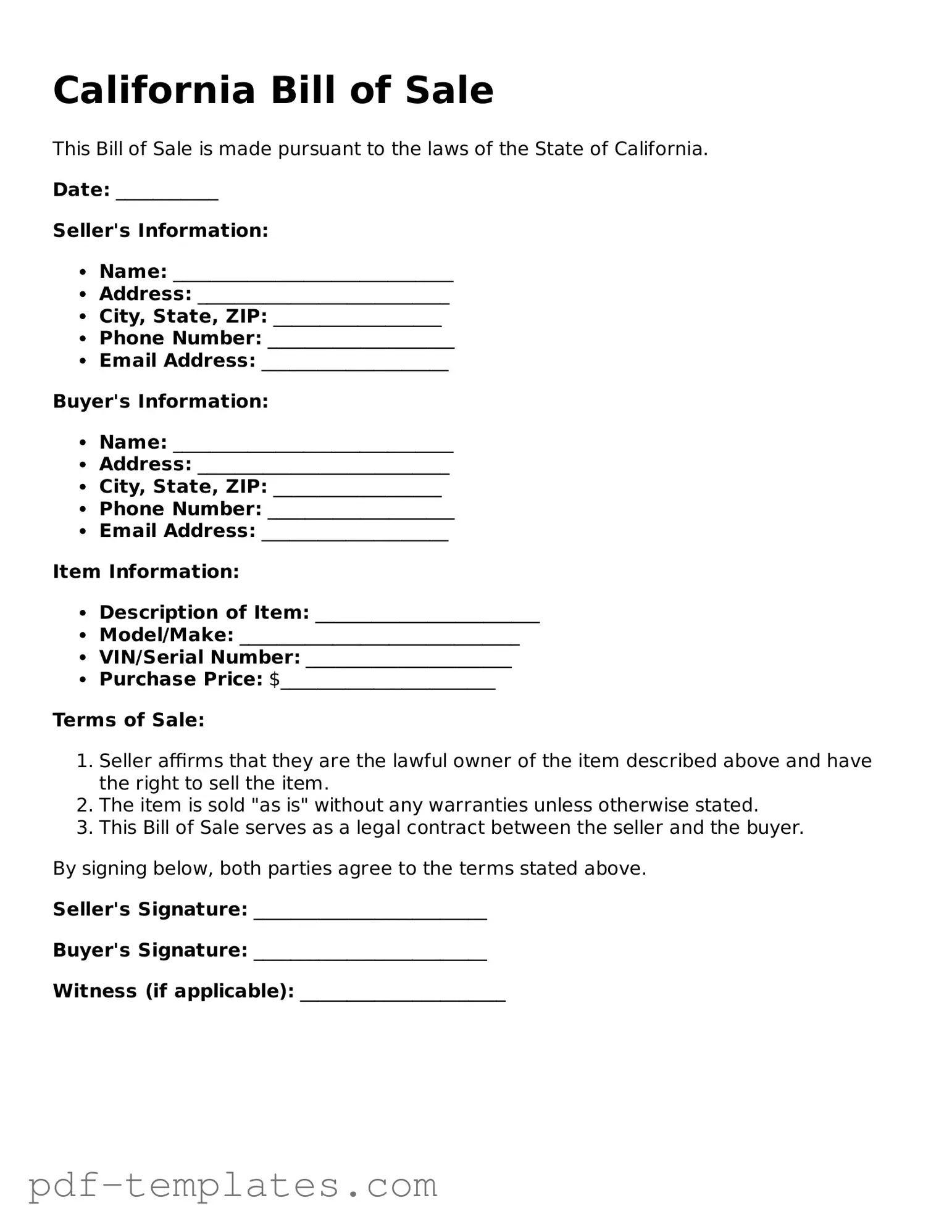The California Bill of Sale form is similar to the Vehicle Title Transfer form, which is used when ownership of a vehicle changes hands. This document serves as proof that the seller has relinquished ownership and the buyer has accepted it. Like the Bill of Sale, it includes essential details such as the vehicle identification number (VIN), the names of both parties, and the sale price. Both forms help protect the interests of the buyer and seller by providing a clear record of the transaction.
Another document that shares similarities with the Bill of Sale is the Receipt for Payment. This receipt is often issued when a buyer pays for goods or services. It confirms that the transaction has taken place and includes information about what was purchased, the amount paid, and the date of the transaction. Just like a Bill of Sale, this receipt can serve as evidence in case of disputes or if proof of purchase is required in the future.
The Purchase Agreement is also akin to the Bill of Sale. This document outlines the terms and conditions of a sale, including the price, payment terms, and delivery details. While a Bill of Sale is often a simpler document that finalizes the transaction, a Purchase Agreement may include more detailed stipulations about the sale. Both documents aim to ensure clarity and protect the rights of both parties involved.
In addition, the Lease Agreement bears resemblance to the Bill of Sale. While a Bill of Sale transfers ownership, a Lease Agreement allows one party to use property owned by another for a specified period. Both documents require clear identification of the parties involved and the items or properties being exchanged. They also serve to protect the interests of both the lessor and lessee, outlining rights and responsibilities.
The Warranty Deed is another document that shares characteristics with the Bill of Sale. This legal document is used to transfer real estate ownership and guarantees that the seller holds clear title to the property. Like a Bill of Sale, it provides a record of the transaction and is often filed with a government office to ensure public record of the ownership transfer.
Similarly, the Assignment of Contract is comparable to the Bill of Sale. This document allows one party to transfer their rights and obligations under a contract to another party. It serves as a formal acknowledgment of the change in parties involved in a contract, similar to how a Bill of Sale acknowledges the transfer of ownership of goods or property.
The Affidavit of Ownership is also similar to the Bill of Sale. This sworn statement is often used to affirm that an individual is the rightful owner of a particular item, especially when a formal title does not exist, such as with certain personal property. Both documents provide a means to establish proof of ownership, which can be crucial in legal matters.
Another related document is the Power of Attorney. While it does not directly involve the sale of goods, it allows one person to act on behalf of another in legal matters, including the transfer of property. Both documents require clear identification of the parties and aim to facilitate transactions while protecting the rights of individuals involved.
Lastly, the Donation Receipt is akin to the Bill of Sale in that it provides proof of a transaction, albeit one that is not for monetary exchange. This document is used when an item is given as a gift or donation, detailing what was given, the value, and the donor and recipient's information. Like a Bill of Sale, it serves as a record of the transaction and can be important for tax purposes or personal records.
